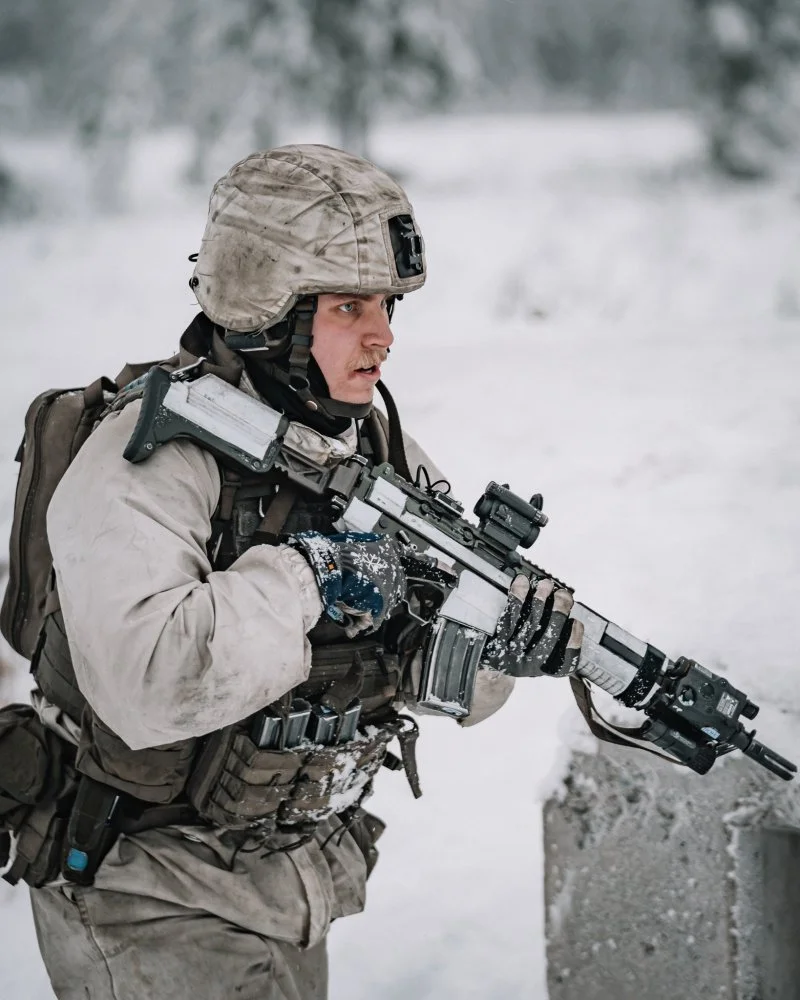Assessing The Strengths And Weaknesses Of A Pan-Nordic Military Alliance

Table of Contents
Potential Strengths of a Pan-Nordic Military Alliance
A unified Pan-Nordic defense strategy offers several compelling advantages. The combined military strength of the Nordic countries – Denmark, Finland, Iceland, Norway, and Sweden – would significantly enhance regional security and deterrence.
Enhanced Defense Capabilities
Pooling resources – personnel, equipment, intelligence – would create a formidable military force. This synergy would lead to:
-
Increased military power: A combined force surpasses the capabilities of individual nations. This includes superior air defense systems, a stronger naval presence, and enhanced cyber security capabilities. For example, combining Norway's naval expertise with Sweden's advanced Gripen fighter jets creates a vastly improved defense posture.
-
Improved interoperability: Standardization of military procedures and equipment would allow for seamless collaboration during joint operations, maximizing efficiency and effectiveness.
-
Greater resilience: A united front presents a significantly stronger deterrent against potential threats, particularly from Russia, which shares borders with several Nordic countries. This increased resilience is crucial in an increasingly volatile geopolitical climate.
-
Example: A coordinated air defense system covering the entire Nordic region would offer far greater protection than individual national systems.
Strengthened Deterrence
A Pan-Nordic Military Alliance would project a powerful message of unity and strength, serving as a robust deterrent to potential aggression.
-
Credible deterrent: A unified military posture presents a far more formidable challenge to any potential aggressor than individual nations acting alone.
-
Increased military presence: Joint military exercises and increased visible military presence would significantly enhance regional security and stability, creating a more secure environment for all member states.
-
Impact on the security landscape: The formation of such an alliance would reshape the regional security architecture, potentially leading to a recalibration of power dynamics in the Baltic Sea region.
-
Deterrence strategies: Joint patrols in the Baltic Sea, coordinated air defense exercises, and shared intelligence networks are key elements of a strengthened deterrence strategy.
Improved International Cooperation
A Pan-Nordic Military Alliance would not only bolster regional security but also enhance international collaboration.
-
Closer NATO ties: Strengthened cooperation with NATO, especially for Finland and Sweden, which recently joined the alliance, becomes even more effective.
-
Increased diplomatic influence: A united voice carries greater weight on the global stage, enabling the Nordic countries to play a more prominent role in international security initiatives.
-
Joint operations: The alliance would enhance the ability of Nordic countries to participate in joint peacekeeping and humanitarian operations, showcasing their collective commitment to global stability.
-
International partnerships: Collaboration with other EU member states and participation in UN peacekeeping missions could be significantly enhanced.
Potential Weaknesses of a Pan-Nordic Military Alliance
While a Pan-Nordic Military Alliance offers significant potential benefits, several challenges must be carefully considered.
National Sovereignty Concerns
Balancing individual national interests with collective security goals within a Pan-Nordic alliance presents a major challenge.
-
Strategic disagreements: Disagreements over strategic priorities, military doctrines, and the allocation of resources could hinder decision-making and effectiveness.
-
Relinquishing control: Member states might be hesitant to relinquish control over aspects of their national defense policies, potentially leading to friction and disagreements.
-
Areas of potential conflict: Differing views on defense spending, military procurement, and the level of military integration could lead to significant conflicts between member states.
-
Example: Disagreements over the deployment of troops or the use of specific military technologies could create internal divisions within the alliance.
Economic and Resource Constraints
Maintaining a large, combined military force would place significant economic strain on member states.
-
Financial burden: The cost of joint procurement, training, and infrastructure development could be substantial, potentially leading to budgetary constraints.
-
Unequal resource distribution: The disparity in military resources and capabilities among the Nordic countries could create imbalances within the alliance, leading to tensions.
-
Coordination challenges: Coordinating funding and procurement processes across multiple nations could prove complex and time-consuming.
-
Example: Disputes over which nation provides certain equipment or the distribution of funding for joint projects could lead to delays and inefficiencies.
Geopolitical Challenges
The volatile geopolitical situation in the Baltic Sea region introduces significant risks for a Pan-Nordic Military Alliance.
-
Escalation of tensions: An increased military presence in the region could inadvertently escalate tensions with neighboring countries, potentially leading to unintended consequences.
-
Regional instability: The alliance's actions could become a focal point for regional instability, attracting unwanted attention from external actors.
-
Risks of military escalation: Any military engagement, even in a defensive capacity, could easily lead to an escalation of conflict with potentially devastating consequences.
-
Example: Accidental incidents or miscalculations could trigger unintended military responses from Russia or other actors.
Conclusion
A Pan-Nordic Military Alliance offers significant potential benefits, including enhanced defense capabilities, strengthened deterrence, and improved international cooperation. However, challenges related to national sovereignty concerns, economic constraints, and geopolitical risks must be carefully considered. A nuanced perspective is required, acknowledging both the advantages and disadvantages before making any decisions. A deeper investigation into the possibilities of a Pan-Nordic Military Alliance, with a critical analysis of the strengths and weaknesses of a pan-Nordic defense union, is crucial. Further exploration of a stronger Nordic military collaboration, considering these potential pitfalls, is essential to ensure regional stability and security. Careful consideration of both the advantages and disadvantages is paramount before proceeding with the formation of a Pan-Nordic Military Alliance.

Featured Posts
-
 Los Angeles Wildfires Fuel A Disturbing New Betting Trend
Apr 22, 2025
Los Angeles Wildfires Fuel A Disturbing New Betting Trend
Apr 22, 2025 -
 Ohio Train Derailment Toxic Chemical Lingering In Buildings
Apr 22, 2025
Ohio Train Derailment Toxic Chemical Lingering In Buildings
Apr 22, 2025 -
 Evaluating The Economic Risks Of Trumps Trade Offensive On American Financial Leadership
Apr 22, 2025
Evaluating The Economic Risks Of Trumps Trade Offensive On American Financial Leadership
Apr 22, 2025 -
 Millions Stolen After Hacker Targets Executive Office365 Accounts
Apr 22, 2025
Millions Stolen After Hacker Targets Executive Office365 Accounts
Apr 22, 2025 -
 Chinas Export Dependence Vulnerability To Tariff Hikes
Apr 22, 2025
Chinas Export Dependence Vulnerability To Tariff Hikes
Apr 22, 2025
